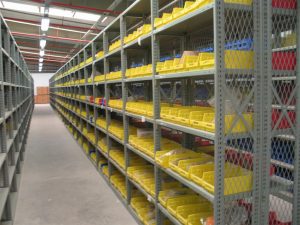 The stock out metric is one of the most popular ways to monitor spare parts inventory.
The stock out metric is one of the most popular ways to monitor spare parts inventory.
A ‘stock out’ occurs when there is demand for an inventory item but there is no stock available.
The Stock Out metric is a curious measure and as with all metrics one needs to be careful about what it is really telling us.
One Way to Ensure a Low Out of Stock Count is to Over-Invest in Inventory
It is essential to measure the availability of stock, after all that is why the investment is made in the first place.
However, measuring out of stock events can be a limiting way to measure inventory as it only measures one dimension of inventory, that is, availability.
This is limiting because one way to ensure a low number of events is to over invest in inventory so that stock is always available no matter what. This is sometimes referred to as ‘just in case’ inventory.
For example, a few years ago the maintenance guys at a client of mine were convinced that they had no inventory issues because they almost never experienced zero stock.
Together we reviewed their inventory holdings and subsequently achieved a 42% reduction in their inventory holdings with no negative impact on their operating capacity.
No wonder they never had stock outs, they held way too much stock!
So, one issue with this metric is that it can drive you to hold too much.
Not All Inventory Items are Equal
Another issue is that not all inventory items are equal.
You probably don’t want to be out of stock of genuinely critical items but it may be OK to sometimes be out of stock of ‘run of the mill’ spares.
Stocking out of critical items would obviously impact downtime and get management attention.
Stocking out of run of the mill spares probably won’t impact downtime but would frustrate your maintenance team – hence it still gets attention even if it is the right thing to do.
Other aspects of the Out of Stock metric that you need to consider include:
- It can be a useful indicator of incorrect inventory or supply settings.
If you regularly run out of items that are needed at short notice this metric tells you that you need to review your supply settings (this may include options other than just increasing your minimum holding) - As a lag indicator you only find out about the problem after it has occurred, so it is a corrective rather than preventive measure.
- You need to be careful about which inventory types you are measuring so that you protect your downtime risk without overstocking.
As mentioned above, all items are not equal and it may be OK to occasional run out of non critical spares and materials.
Try also adjusting your concept of out of stock to being that an item is only out of stock if it cannot be supplied within the maintenance window in which it is required.
This doesn’t mean that it must be stocked in your storeroom – you may be able to get it supplied locally within the allowable time frame.
For information on our spare parts management online training please visit our Pro Level page.
Posted by: Phillip Slater